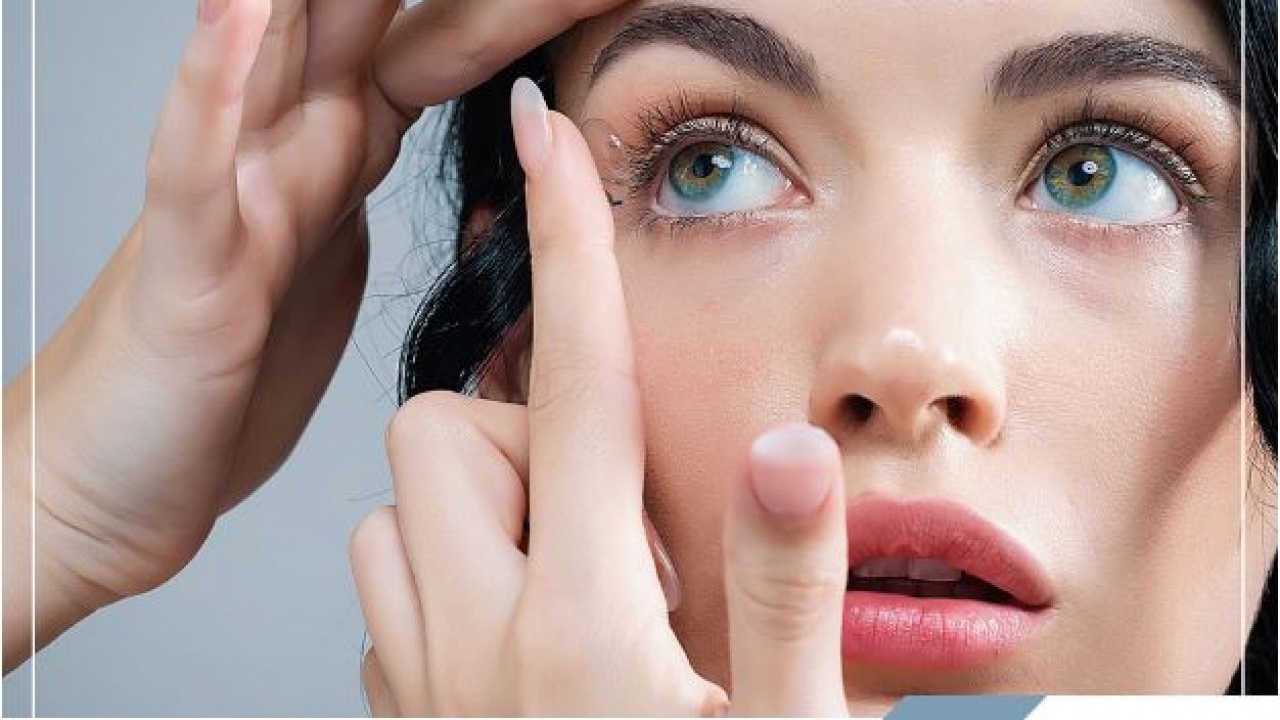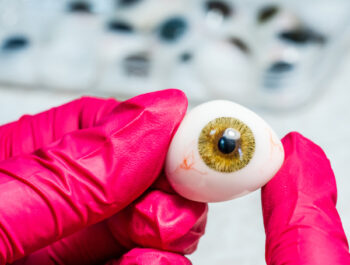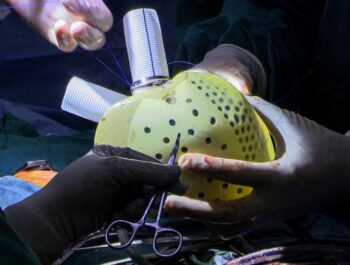
Contact Lenses
7min ReadWhat are contact lenses? They are called invisible eyeglasses.
A contact lens is a thin, curved lens placed on the film of tears that covers the surface of your eye. The lens itself is naturally clear, but is often given the slightest tinge of color to make them easier for wearers to handle. Today’s contact lenses are either hard or soft. Most people wear the latter form now, but it wasn’t too long ago that contact lenses were even glass blown!
People wear contact lenses to correct a range of refractive errors, including:
-
nearsightedness
-
farsightedness
-
astigmatism
-
presbyopia
Contact lenses may also be used to treat eye diseases such as keratoconus or damage to the cornea causes by infection or injury.
There are two general categories of contact lenses – soft and rigid gas permeable (RGP). All contact lenses require a valid prescription.
Soft Contact Lenses
Rigid Gas Permeable (RGP) Contact Lenses
Extended Wear Contact Lenses
Disposable (Replacement Schedule) Contact Lenses
Lens Comparison
Specialized Uses of Contact Lenses
Orthokeratology (Ortho-K)
Decorative (Plano) Contact Lenses
_______________________________________
Soft Contact Lenses
Soft contact lenses are made of soft, flexible plastics that allow oxygen to pass through to the cornea. Soft contact lenses may be easier to adjust to and are more comfortable than rigid gas permeable lenses. Newer soft lens materials include silicone-hydrogels to provide more oxygen to your eye while you wear your lenses.
Rigid Gas Permeable (RGP) Contact Lenses
Rigid gas permeable contact lenses (RGPs) are more durable and resistant to deposit buildup, and generally give a clearer, crisper vision. They tend to be less expensive over the life of the lens since they last longer than soft contact lenses. They are easier to handle and less likely to tear. However, they are not as comfortable initially as soft contacts and it may take a few weeks to get used to wearing RGPs, compared to several days for soft contacts.
Extended Wear Contact Lenses
Extended wear contact lenses are available for overnight or continuous wear ranging from one to six nights or up to 30 days. Extended wear contact lenses are usually soft contact lenses. They are made of flexible plastics that allow oxygen to pass through to the cornea. There are also a very few rigid gas permeable lenses that are designed and approved for overnight wear. Length of continuous wear depends on lens type and your eye care professional’s evaluation of your tolerance for overnight wear. It’s important for the eyes to have a rest without lenses for at least one night following each scheduled removal.
Disposable (Replacement Schedule) Contact Lenses
The majority of soft contact lens wearers are prescribed some type of frequent replacement schedule. “Disposable,” as defined by the FDA, means used once and discarded. With a true daily wear disposable schedule, a brand new pair of lenses is used each day.
Some soft contact lenses are referred to as “disposable” by contact lens sellers, but actually, they are for frequent/planned replacement. With extended wear lenses, the lenses may be worn continuously for the prescribed wearing period (for example, 7 days to 30 days) and then thrown away. When you remove your lenses, make sure to clean and disinfect them properly before reinserting.
Specialized Uses of Contact lenses
Conventional contact lenses correct vision in the same way that glasses do, only they are in contact with the eye. Two types of lenses that serve a different purpose are orthokeratology lenses and decorative (plano) lenses.
Orthokeratology (Ortho-K)
Orthokeratology, or Ortho-K, is a lens fitting procedure that uses specially designed rigid gas permeable (RGP) contact lenses to change the curvature of the cornea to temporarily improve the eye’s ability to focus on objects. This procedure is primarily used for the correction of myopia (nearsightedness).
Overnight Ortho-K lenses are the most common type of Ortho-K. There are some Ortho-K lenses that are prescribed only for daytime wear. Overnight Ortho-K lenses are commonly prescribed to be worn while sleeping for at least eight hours each night. They are removed upon awakening and not worn during the day. Some people can go all day without their glasses or contact lenses. Others will find that their vision correction will wear off during the day.
The vision correction effect is temporary. If Ortho-K is discontinued, the corneas will return to their original curvature and the eye to its original amount of nearsightedness. Ortho-K lenses must continue to be worn every night or on some other prescribed maintenance schedule in order to maintain the treatment effect. Your eye care professional will determine the best maintenance schedule for you.
Currently, FDA requires that eye care professionals be trained and certified before using overnight Ortho-K lenses in their practice. You should ask your eye care professional about what lenses he or she is certified to fit if you are considering this procedure.
CRT: Corneal Refractive Therapy
Even though eyeglasses and traditional contact lenses are proven to correct nearsightedness, farsightedness, and other visual problems. Some people will always seek the freedom & convenience of wearing no corrective lenses of any kind during their daily activities. While many are willing to go ahead with long-term solutions such as laser surgery, others would prefer a less invasive, more reversible answer. There is a solution to this known as corneal refractive therapy or CRT — overnight reshaping lenses fit and dispensed at True Eye Experts in Florida.
The idea for CRT stems from the late 1950s when eye doctors noticed those nearsighted patients who wore hard contact lenses sometimes experience a temporary improvement in their unaided eyesight. That’s because the shape of the cornea plays a critical role in how light is refracted and how images are delivered to the retina. An abnormally-shaped cornea can cause myopia (nearsightedness), hyperopia (farsightedness) or astigmatism. But the cornea is also malleable — it can conform to a new shape for a short period of time. This discovery led to the development of corneal refractive therapy, also known as orthokeratology or Ortho-K.
CRT involves the use of specially designed contacts that you wear to bed at night. As you sleep, the lenses apply just enough gentle pressure to reshape your corneas into your ideal vision prescription. Upon awakening, simply remove the lenses and enjoy the entire day with clear vision without glasses or contact lenses. The effect can sometimes last for days at a time — because the CRT lenses are worn overnight, you can achieve uninterrupted vision correction with them. The fact that the effect is temporary means that you can always change your mind and take up glasses or traditional contacts whenever you feel like it. Many patients regard this flexibility as a great advantage over refractive correction surgery.
What are the difference between CRT and ortho k:
CRT FDA approved lenses are only manufactured by Paragon Company, while Ortho K lenses are manufactured by any other companies.
To whom are these lenses prescribed?
These lenses are suitable for any age, from 6 diopters of myopia and 1.75 diopters of astigmatism, whereas most doctors recommend Lasik or Lasek for correcting myopia, some other physicians believe CRT or Ortho K are good for patients with 4 diopters of myopia.
How do optometrists prescribe contact lenses to their patients?
The following tests may be conducted to obtain a precise contact lens prescription:
1. Cornea size and curvature. This test enables your eye doctor to determine an appropriate size and base curve for your contact lenses.
2. Pupil or iris size. Your eye doctor may also measure the size of your eye’s pupil or iris to determine which size contact lenses are most appropriate for you. This is especially important if you plan to wear rigid gas permeable lenses.
3. Tear film evaluation. This test will be an important determining factor of your ability to successfully wear contact lenses. Dry eyes can significantly affect contact lens wear, as it can cause your eyes to become irritated and itchy, making it difficult to wear your lenses.
Lasik or CRT?
If the patient wants to put aside eye glasses only during the day time, CRT could be a good option for him, otherwise they can choose Lasik treatment to leave eye glasses lifetime.
If patient chooses to do Lasik surgery after CRT, he must wait until the curve of the cornea back to normal then he can undergo Lasik surgery.













Reviews
Number of pending reviews175